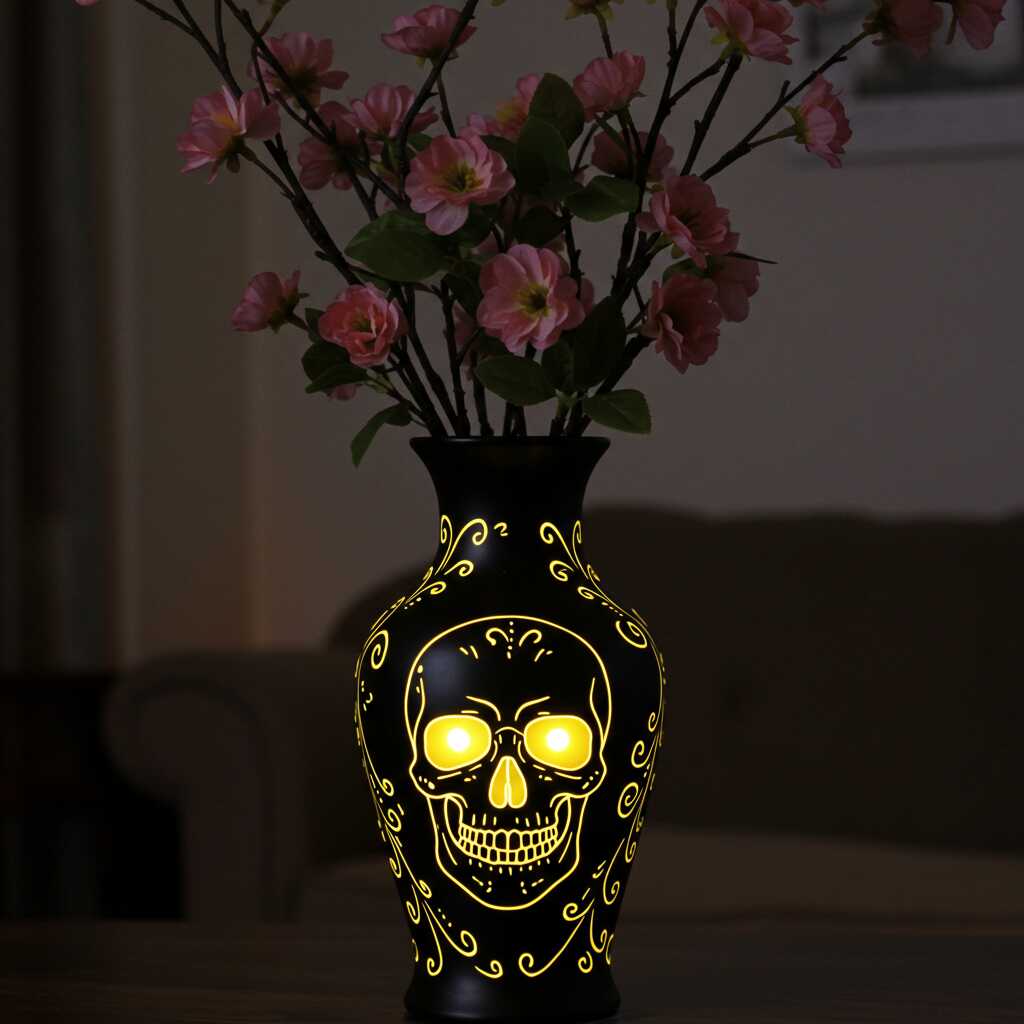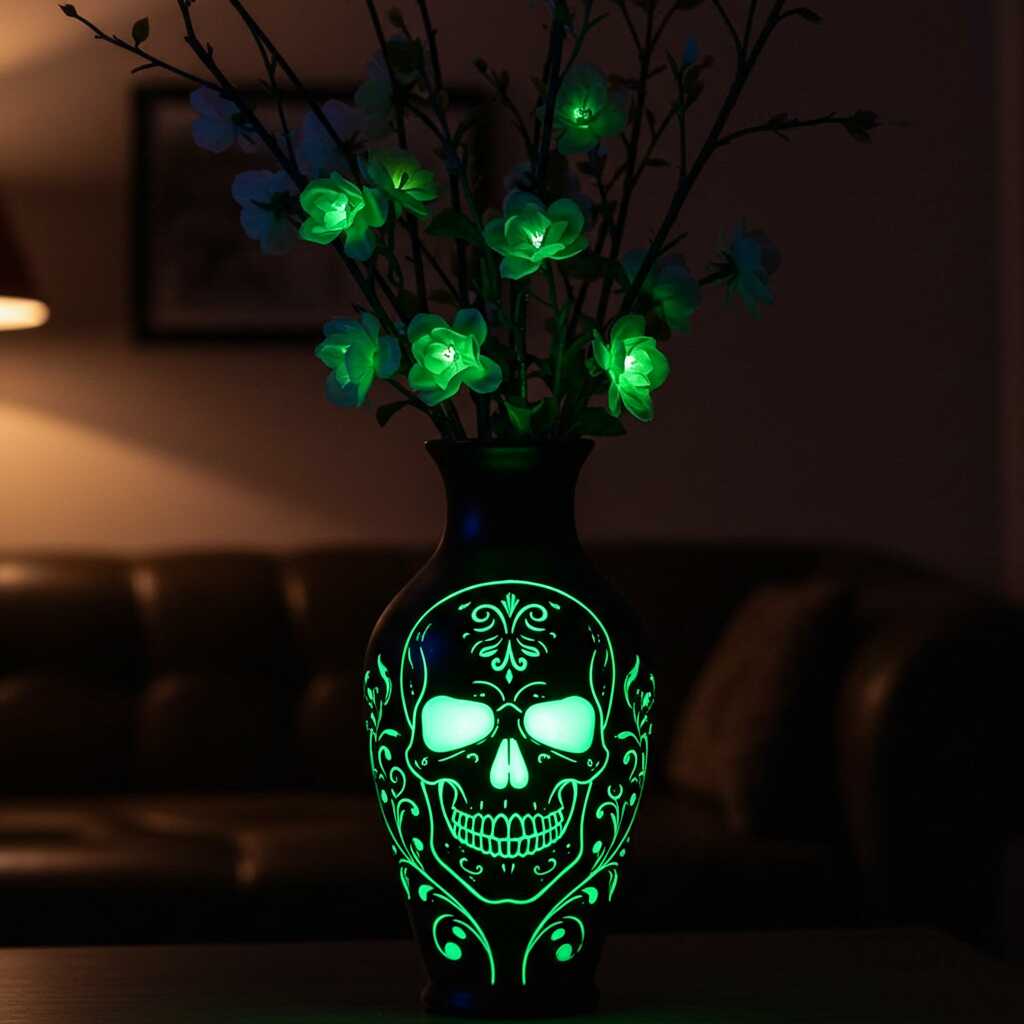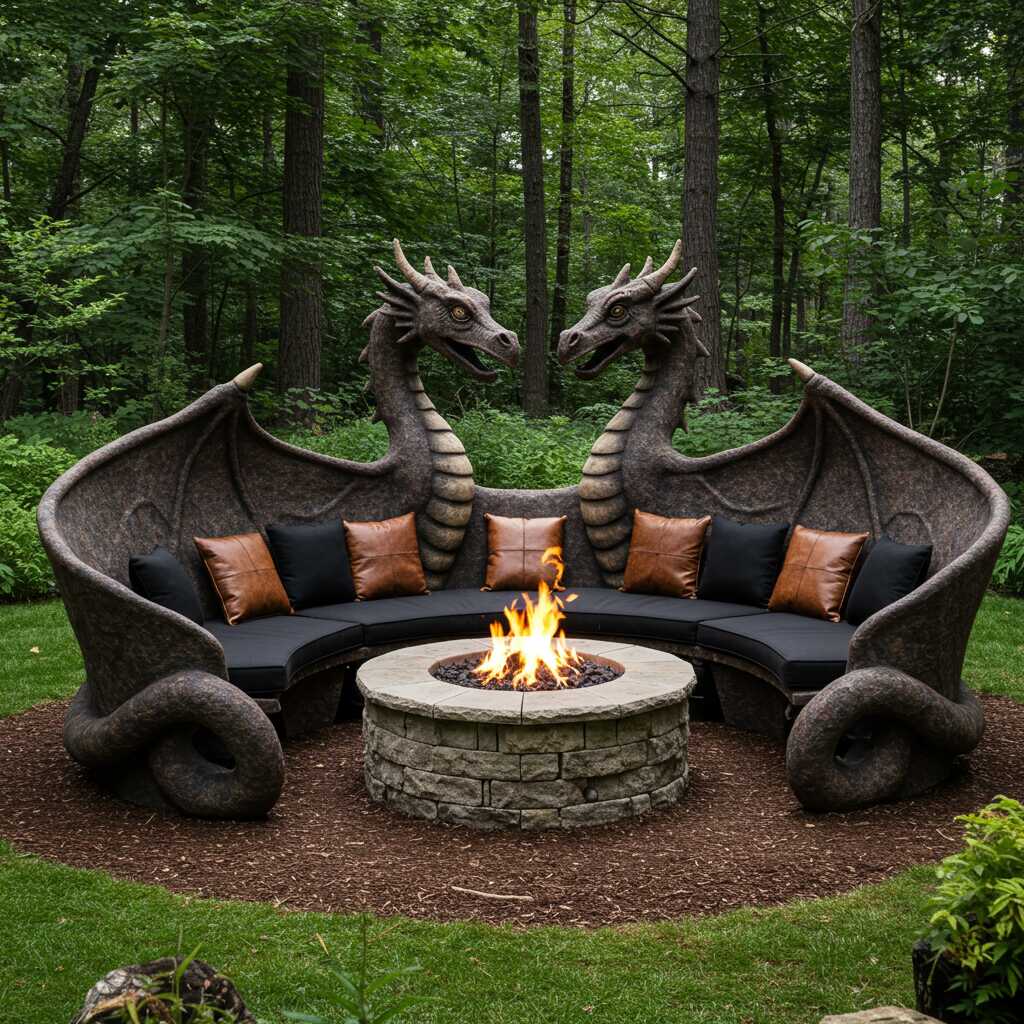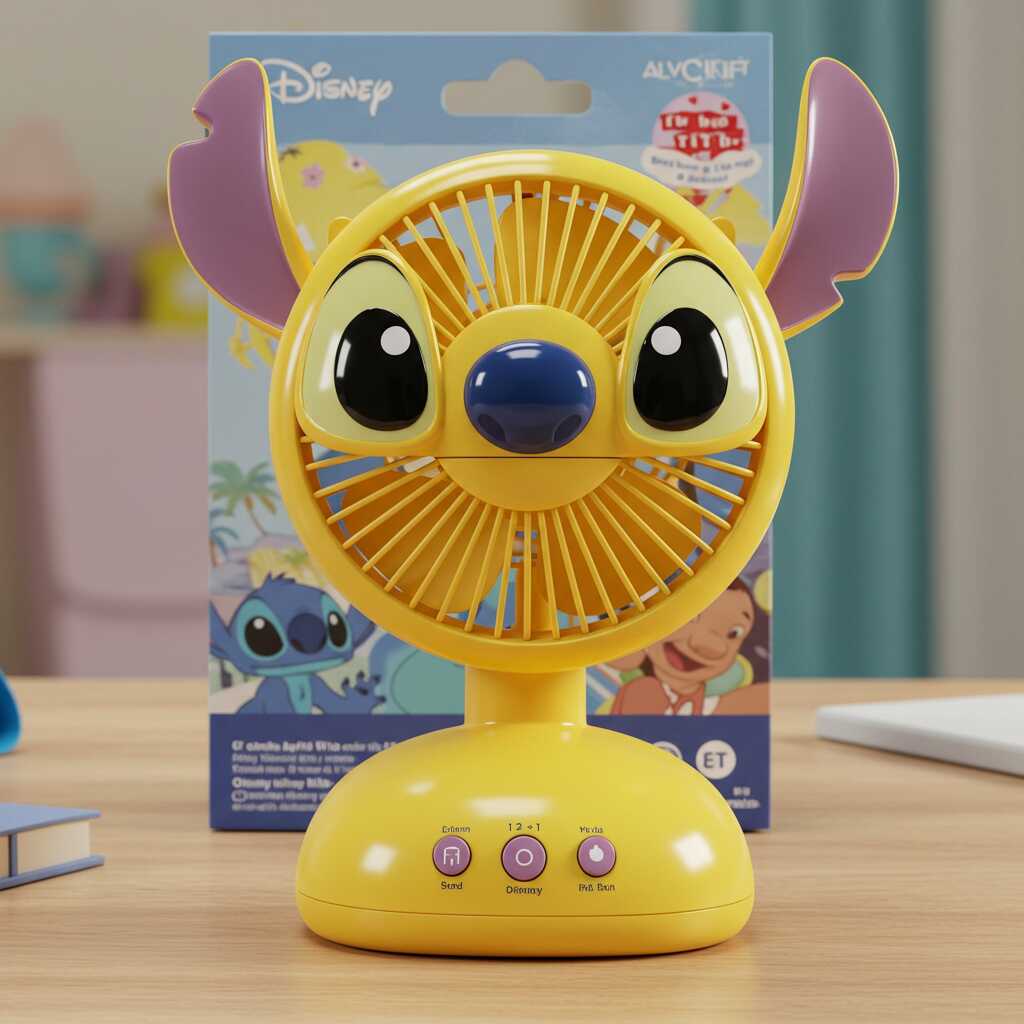In the ever-evolving world of interior design, where creativity knows no bounds, the skull shaped vase has emerged as a captivating and transformative element that bridges the gap between unconventional aesthetics and sophisticated decor. These distinctive vessels, which marry the timeless appeal of traditional vases with the dramatic presence of human skulls, represent more than just decorative objects – they embody a unique intersection of art, culture, and personal expression. Unlike standard vases that primarily serve as functional holders for flowers, skull shaped vases stand as sculptural masterpieces in their own right, commanding attention and sparking conversation in any space they inhabit.
The visual impact of these remarkable pieces stems from their ability to challenge conventional design norms while maintaining an undeniable elegance. Crafted with meticulous attention to detail, each skull shaped vase presents a fascinating study in contrasts: the delicate curves reminiscent of classical sculpture meet the structured geometry of skeletal features, creating a harmonious blend of softness and strength. The hollow cavities that traditionally hold flowers become eye sockets, transforming what could be macabre into something remarkably beautiful and thought-provoking.
What sets these vases apart is their versatility in complementing various design styles. Whether placed in a minimalist modern setting, nestled among vintage treasures, or incorporated into bohemian eclectic arrangements, skull shaped vases possess an innate ability to adapt and enhance their surroundings. Their presence can transform a simple arrangement of wildflowers into a striking artistic composition or elevate a single stem into a statement piece that draws the eye and invites contemplation.
Beyond their aesthetic value, skull shaped vases carry deeper symbolic meanings that resonate with contemporary sensibilities. They speak to our fascination with mortality and the cyclical nature of life, yet present these profound themes through a lens of beauty and refinement. This duality allows them to function not merely as decorative items but as meaningful additions to one’s living space – objects that provoke thought while simultaneously enhancing the visual landscape of a room. As we delve deeper into the world of these extraordinary vases, we uncover layers of significance and potential that extend far beyond their initial appearance as mere containers for floral arrangements.
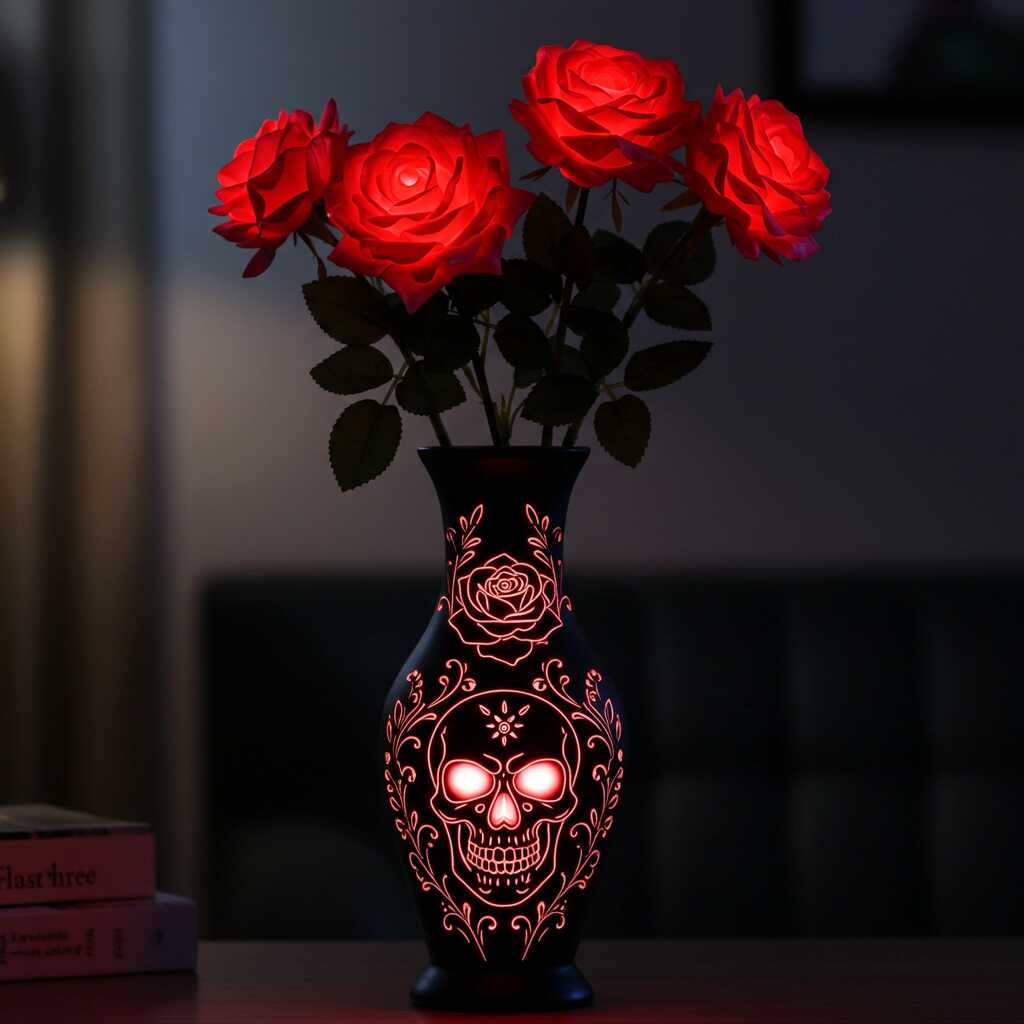
Historical Roots and Cultural Significance
The journey of the skull shaped vase traces back through centuries of human history, where the skull motif has consistently held powerful cultural significance across civilizations. Ancient Mesoamerican cultures, particularly the Aztecs and Mayans, revered skull imagery in their ceremonial objects and architectural designs, viewing it not as a symbol of death but rather as a representation of transformation and spiritual rebirth. This historical reverence laid the groundwork for modern interpretations, where contemporary artists began incorporating these ancient motifs into functional art pieces during the late 20th century.
In Victorian England, the concept of memento mori evolved into elaborate decorative arts, where skull motifs appeared in everything from jewelry to furniture, serving as reminders of life’s transience. This period marked the beginning of skulls transitioning from purely religious symbols to elements of home decor. The Art Nouveau movement further popularized organic forms, paving the way for modern designers to experiment with anatomical shapes in their creations. By the 1980s, the punk and gothic subcultures embraced skull imagery, pushing it into mainstream consciousness and influencing high-end design houses.
The evolution of skull shaped vases gained significant momentum during the early 21st century when avant-garde designers began experimenting with ceramic techniques that allowed for intricate detailing previously impossible to achieve. This technological advancement coincided with a growing appreciation for dark academia aesthetics and alternative lifestyles, making these vases increasingly desirable as decorative objects. Contemporary artists have since expanded upon this foundation, incorporating elements of surrealism and abstract expressionism into their designs.
Cultural perceptions of skull shaped vases have shifted dramatically over time, moving away from associations with morbidity toward recognition of their artistic merit. In Japanese design philosophy, these pieces align with wabi-sabi principles, embracing imperfection and transient beauty. Meanwhile, in Western contexts, they’ve become synonymous with edgy sophistication, often appearing in high-profile interior design projects that seek to create bold visual statements. The rise of social media platforms has further cemented their status as coveted design elements, with influencers and tastemakers showcasing innovative ways to incorporate them into various aesthetic schemes.
Today’s skull shaped vases represent a sophisticated fusion of historical reverence, artistic innovation, and cultural evolution. They serve as tangible connections to our shared human heritage while simultaneously pushing the boundaries of contemporary design. This rich historical context and cultural significance lend these pieces depth and meaning beyond their immediate visual impact, making them particularly compelling choices for those seeking to infuse their spaces with layers of symbolism and artistic integrity.
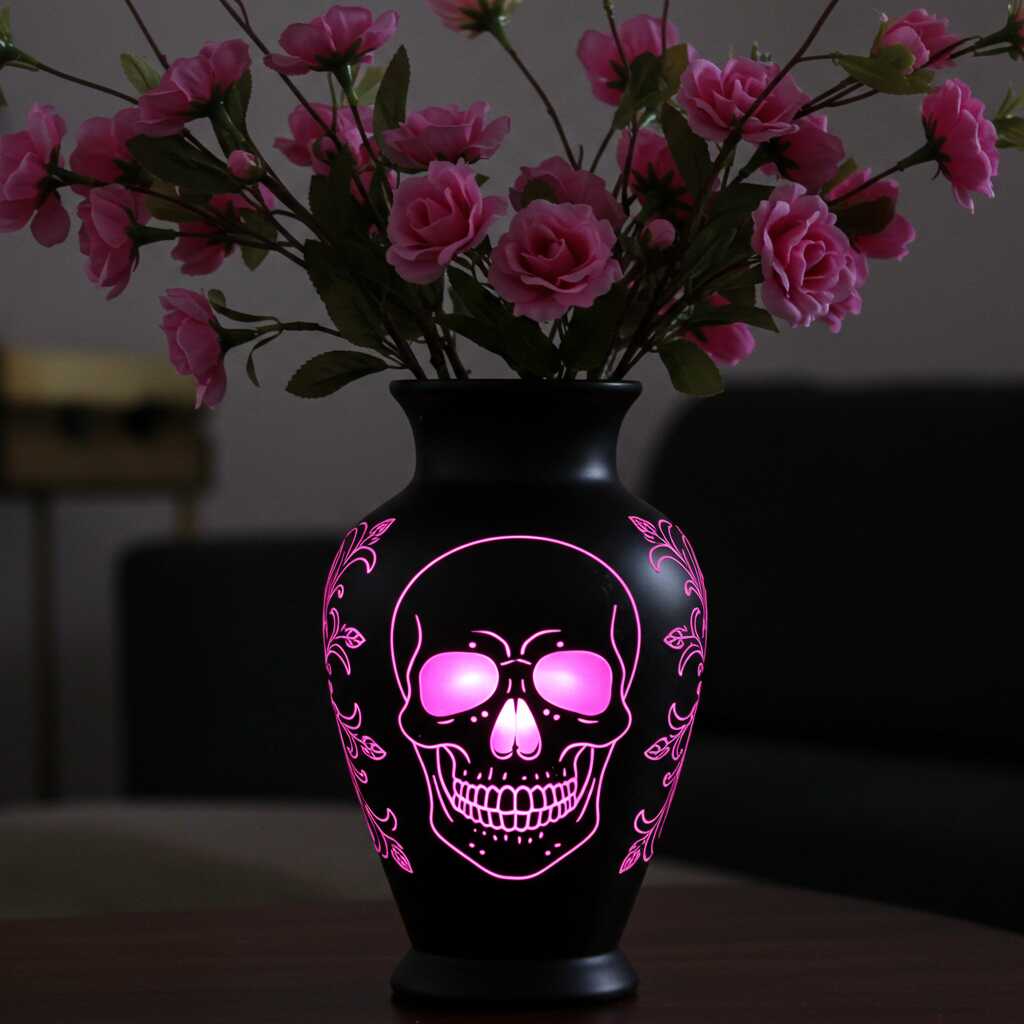
Design Versatility in Modern Interiors
The remarkable adaptability of skull shaped vases makes them uniquely suited to enhance diverse interior design styles, seamlessly integrating into both traditional and contemporary settings. In minimalist environments, their clean lines and geometric precision create striking focal points that align perfectly with the “less is more” aesthetic. A single skull shaped vase placed on a stark white console table can serve as the sole decorative element in a room, its simplicity allowing the piece’s inherent drama to shine without overwhelming the space. The negative space within the skull’s form echoes the minimalist principle of intentional emptiness, creating a thoughtful dialogue between object and environment.
When incorporated into bohemian interiors, skull shaped vases take on an entirely different character, becoming vibrant canvases for creative expression. Paired with lush, overflowing greenery or colorful dried botanicals, these vases transform into living sculptures that celebrate natural forms and textures. Their structural complexity complements the layered, eclectic nature of boho-chic spaces, particularly when displayed alongside macramé wall hangings or ethnic textiles. The juxtaposition of the vase’s rigid form against softer organic elements creates dynamic visual interest, while its potential for customization through paint or embellishments allows for personalization that resonates with the bohemian spirit.
In industrial design schemes, skull shaped vases find their place among exposed brick walls and metal accents, their concrete or ceramic finishes harmonizing beautifully with raw materials. When crafted from metallic glazes or featuring distressed finishes, these vases echo the weathered patina of industrial spaces while adding an unexpected touch of elegance. Their placement in converted lofts or warehouse-style apartments feels particularly authentic, as the skull’s structural framework mirrors the exposed beams and mechanical systems characteristic of these environments. The interplay of light and shadow across their surfaces adds depth to spaces that might otherwise feel cold or austere.
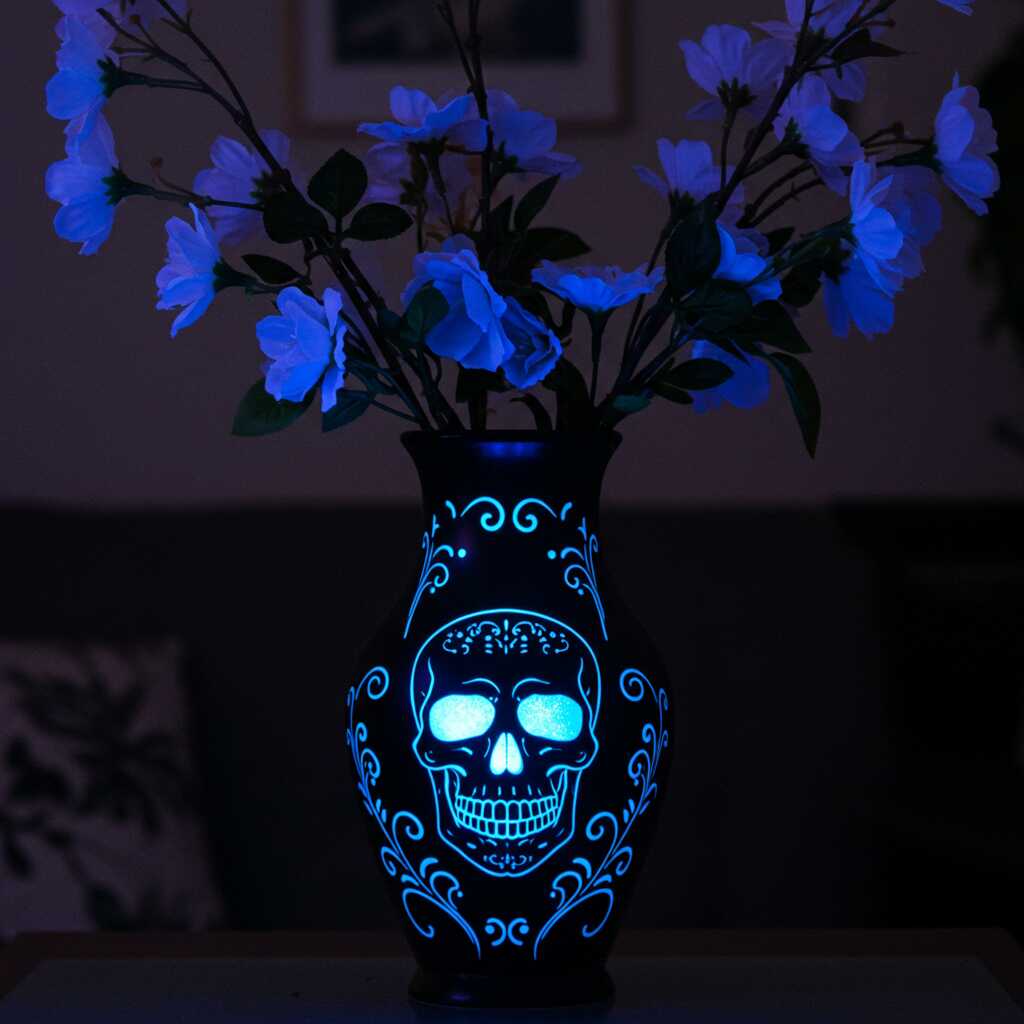
For traditional interiors, skull shaped vases offer a subtle way to introduce modern elements without disrupting established aesthetics. When executed in classic porcelain or fine bone china, these pieces can bridge generations of design sensibilities. Placed symmetrically on mantels or sideboards, they maintain the formal balance expected in traditional spaces while injecting a contemporary edge. Their ability to hold seasonal arrangements – from winter berries to spring blossoms – ensures they remain relevant throughout the year, adapting to changing decor needs while maintaining their core identity.
Perhaps most notably, skull shaped vases excel in transitional spaces where old meets new. Their capacity to embody both classical craftsmanship and modern sensibility makes them ideal for blending disparate design elements. In open-concept living areas that combine formal dining with casual seating, these vases can serve as unifying elements that tie together varied furnishings and styles. Their presence suggests a thoughtful approach to decoration, acknowledging tradition while embracing contemporary perspectives – a perfect metaphor for transitional design itself.
The psychological impact of these versatile pieces extends beyond their aesthetic contributions. Their ability to adapt to different environments speaks to our evolving relationship with space and decoration, reflecting how modern interiors increasingly prioritize flexibility and multifunctionality. Whether standing alone as sculptural centerpieces or functioning as functional vessels for floral displays, skull shaped vases demonstrate how design elements can transcend style boundaries while maintaining their essential character.
Symbolism and Emotional Resonance
Beyond their aesthetic appeal, skull shaped vases carry profound symbolic weight that resonates deeply with human psychology and emotional well-being. These vessels tap into universal themes of mortality and renewal, offering occupants a daily reminder of life’s fleeting nature while simultaneously celebrating its enduring beauty. The juxtaposition of such weighty symbolism with the nurturing act of displaying flowers creates a fascinating psychological tension that can profoundly influence one’s mental state and perception of their living space.
The presence of a skull shaped vase in a home environment serves as a constant meditation on the cyclical nature of existence. Its form evokes thoughts about beginnings and endings, growth and decay – themes that parallel the very lifecycle of the flowers it holds. This connection between container and contents creates a powerful metaphor for life’s transient beauty, encouraging mindfulness and appreciation for the present moment. Many individuals report feeling a heightened sense of gratitude and awareness when interacting with these pieces, as they become daily touchstones for philosophical reflection.
From a psychological perspective, the incorporation of skull imagery into domestic spaces challenges conventional comfort zones, potentially fostering personal growth and resilience. Exposure to symbols typically associated with mortality within a safe, controlled environment can help desensitize anxiety surrounding existential themes. Instead of evoking fear, these vases often inspire contemplation and acceptance, contributing to greater emotional maturity and inner peace. The act of caring for flowers within such a vessel becomes ritualistic, transforming routine maintenance into meaningful practice.
Moreover, the symbolic duality of skull shaped vases – their simultaneous celebration of life through floral display and acknowledgment of mortality through form – creates a unique emotional equilibrium within a space. This balance can promote psychological stability, providing a grounding presence that acknowledges both the fragility and strength of human experience. Many users report feeling more centered and focused in rooms containing these pieces, suggesting they serve as anchors for emotional processing and self-reflection.
The vase’s role as a container takes on additional significance when viewed through this symbolic lens. Just as it holds flowers, it metaphorically contains and channels complex emotions, providing a safe space for processing difficult thoughts and feelings. This containment aspect can be particularly beneficial in therapeutic settings or personal sanctuaries, where the vase becomes a silent partner in emotional exploration and healing. The combination of beautiful form and deep meaning creates an object that nourishes both the aesthetic senses and the soul’s need for understanding.

Conclusion: Embracing the Artistic Alchemy of Skull Shaped Vases
The journey through the world of skull shaped vases reveals their true essence as more than mere decorative objects – they are transformative elements that redefine the boundaries of interior design and personal expression. These remarkable pieces serve as testament to the power of design to transcend functionality, existing simultaneously as sculptural masterpieces, symbolic representations, and emotional catalysts within our living spaces. Their ability to seamlessly integrate into diverse aesthetic environments while maintaining their distinctive character demonstrates the universal appeal of thoughtful design that honors both form and meaning.
The magic of skull shaped vases lies in their exceptional capacity to challenge conventional design paradigms while enhancing the emotional resonance of interior spaces. They embody a rare synthesis of artistic innovation and cultural significance, bridging historical traditions with contemporary sensibilities. Through their presence, these vases invite us to reconsider our relationship with space, objects, and the deeper themes of human existence. Their impact extends beyond visual enhancement, touching upon psychological and emotional dimensions that enrich our daily lives and interactions with our surroundings.
As we embrace the artistic alchemy of skull shaped vases, we recognize their role in shaping modern interiors that are both aesthetically compelling and emotionally intelligent. These pieces remind us that true design excellence transcends mere decoration, offering instead a profound opportunity to create spaces that reflect our deepest values, stimulate intellectual curiosity, and nurture emotional well-being. In doing so, skull shaped vases establish themselves not just as decorative elements, but as meaningful contributors to the evolving narrative of contemporary living spaces.
